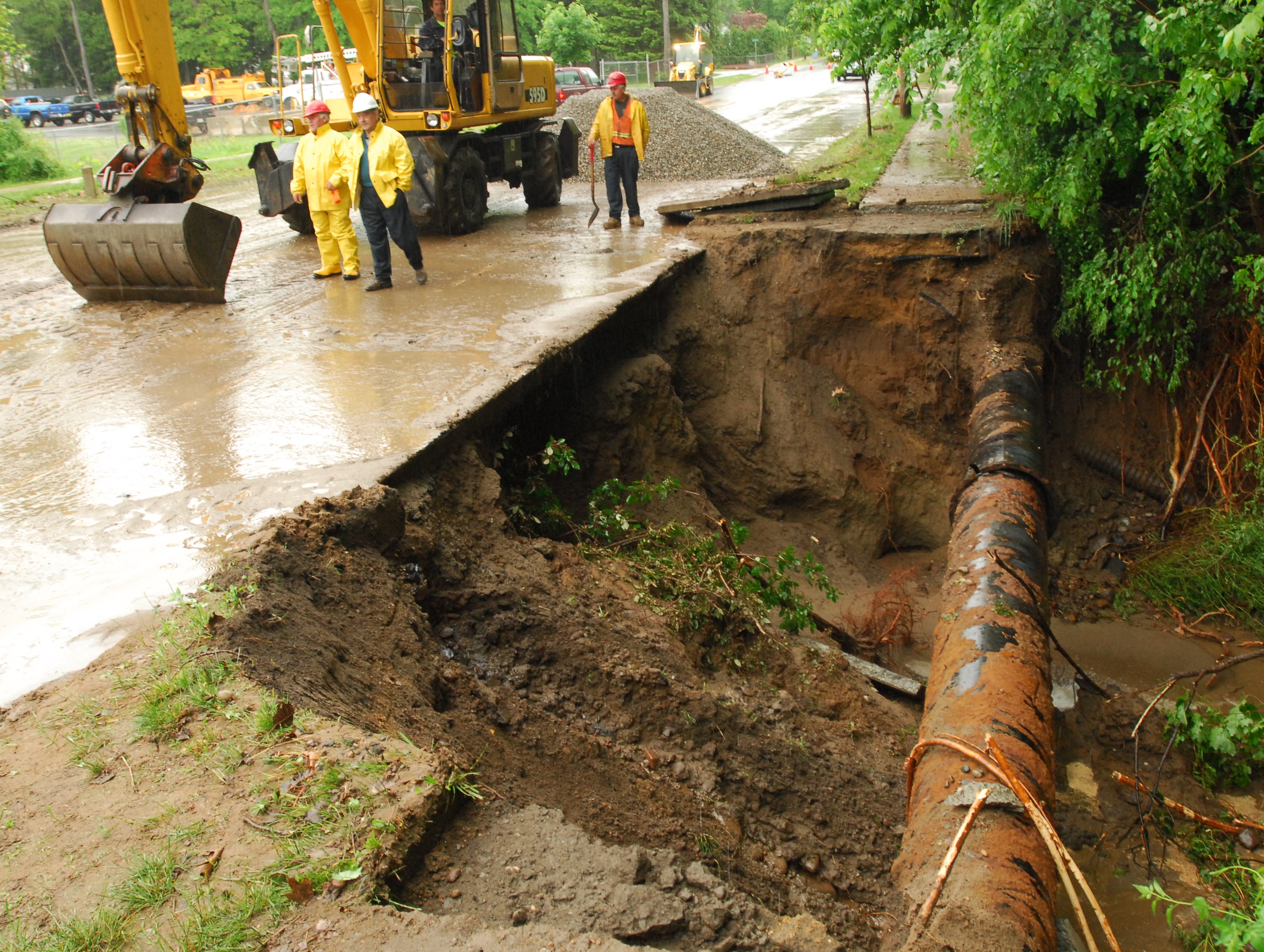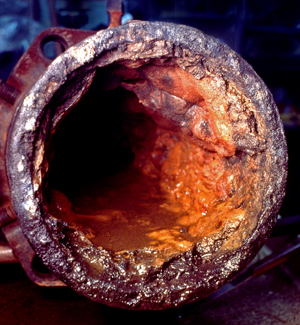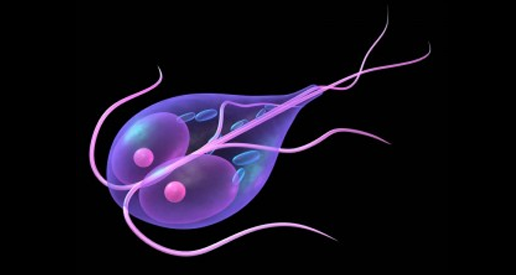Bacteria, Virus, and Microorganisms in Water
Are there “Hidden Bugs” in Your Water?
Usually only the most severe cases (i.e., hospitalization, death, or mass exposure) get reported in the news. If most cases go unreported, how many people are actually affected?
These bugs can be found in both city water supplies and private well water.
How can a City have Bacteria in Water?
From 2005-2006, 20% of US outbreaks of virus and bacteria in water were caused by old, dirty pipes. In the US, the average life expectancy of a water main ranges from 75-120 years. Problem is, they don’t usually get replaced until they’re 200 years old.
Old pipes have problems:

Water Main Breaks and Leaks
The AWWA reports that 10% of city water never makes it to your house. It’s lost through leaks in the water system. Water main breaks and leaks happen in between the water treatment plant and your home. This leaves your drinking water unprotected. Every time a pipe breaks, or leaks, it acts as a siphon. Dirt surrounding the pipe is vacuumed into the water supply.

Biofilm in the Distribution System
Old pipes with stagnant water become lined with Biofilm. Biofilm acts as a nutrient-rich source for bacteria like H. Pylori. Even worse, it can act as a shield that prevents chlorine from killing the bugs.
Additional Risks for Well Water
Private well water has the same risks as city water – plus two more. Your well head sits outside in your yard. It may become damaged if a lawnmower or construction vehicle accidentally drives into it. This impact can damage the connection to the pitless adaptor down in the well pit.
City water is disinfected with Chlorine. Chlorine isn’t 100% effective against all bacteria in water, but it’s a start. 30% of waterborne disease comes from untreated water. Untreated well water has no protection.
Bacteria, Virus, and Cysts Oh My!
In 2000, the EPA Ground Water Rule increased regulation of municipal water supplies. There are three main categories of waterborne pathogens that are regulated.

Bacteria in Drinking Water
Many people are familiar with e. coli from all the food recalls. It comes from human or animal waste. Mycobacteria are chlorine-resistant bacteria that are of great concern in hospital outbreaks among immunocompromised individuals. Even Legionella has been detected.

Virus in Drinking Water
In 2003 and 2004, 6 studies measured virus in water supplies. Between 8-42% of samples tested positive for human enteric virus including Enterovirus, Rotovirus, Influenza, and Hepatitis A. They even found Norovirus in water. It makes you wonder how many cases of “food poisoning” could have come from water instead.

Cysts in Drinking Water
Protozoan parasites like Cryptosporidium and Giardia have been found in both surface (river and lake water) in addition to aquifers (well water). Cryptosporidium became famous when it made 240,000 Milwaukee residents sick. Cysts are particularly troublesome as they are highly chlorine-resistant.
Bacteria Water Filters and Microbe Protection
Water Softeners and most Drinking Water Systems are not effective against bacteria or virus in water. In fact, most manuals for those products state they are “not intended for microbiologically unsound water”. Your standard faucet-mount filter is actually a pretty good breeding ground for bacteria. Thankfully there are several technologies that have a proven track record for microbes:
Ultraviolet Disinfection
Ultraviolet Systems are a chemical-free approach to disinfecting water. Ultraviolet, or UV Systems, literally destroy the DNA of bacteria, virus, and cysts. UV has been used in residential, commercial, and municipal installations for decades. UV consumes about the same electricity as a 40w light bulb, but has ZERO waste water.
Ultrafiltration
Ultrafiltration Systems filter down to 0.02 microns in size. While UV kills the bugs, Ultrafiltration removes them. It also reduces turbidity and sediment in the water. These systems use very little electricity, but do require periodic flushing that uses around 12 gallons of water.
Specialty Filters
The “Greens Series” filters used in the Cartridge Tank System offer truly impressive performance. These unique filters use a combination of silver-infused carbon along with “Ahlstrom Technology”. Silver is a natural antimicrobial material that allows carbon to remove Chlorine and chemicals while inhibiting bacteria growth. Ahlstrom technology creates a physical barrier with 4 LRV cyst retention and 5 LRV Klebsiella retention.
Summary
Think of a water disinfection system as a “home security system for your drinking water”. You may never need it. But you get piece of mind knowing that your drinking water is always safe.
Contact Premier Water at (952) 479-4553 if you would like a FREE Consultation to help find the best water treatment system for your needs.
*© 2012 The Republican Company.All rights reserved. Reprinted with permission.
